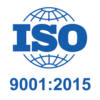Why promote innovative multifunctional facade systems?
Much of the existing building sector is characterized by highly energy-intensive buildings, structurally and technologically obsolete, qualitatively degraded. The current market need is, therefore aimed at building redevelopment and energy efficiency of existing structures.
However, the invasiveness of the interventions, the difficult compatibility of the new systems with the existing building from an aesthetic-structural-dimensional point of view, the problematic interaction between the path of the plant channels with the existing architectural structure, it often forces users to give up the possibility of carrying out energy retrofit actions.
Numerous national and international summits have highlighted the urgent need to find easily achievable solutions that can convert old energy-intensive buildings into buildings with innovative features and low energy consumption. The techniques currently popular on the market as ventilated walls, double skin facades external cladding systems, despite some undoubted advantages, still have application limits, difficult to integrate with systems and criticalities in operating conditions.
I-Best System Description
I-BEST is a technological system for the redevelopment of existing buildings, consisting of modular and multi-functional panels, supported by a metal and light supporting structure that anchors itself to the existing building so as not to burden it (thus configuring itself physically independent of the existing envelope) and at the same time generate a cavity capable of containing and hiding the plant channels.
I-BEST, overcoming the criticalities of today's building practice, has the following features and performance:
Features
- replicable in various climatic contexts;
- adaptable and scalable to various building types;
- flexible, from a formal and performance point of view, depending on the technological and construction characteristics of the building subject to intervention;
- it does not structurally burden the existing building;
- aesthetically qualifying for the building and its urban surroundings;
- economic in industrial production;
- non-invasive for the occupants of the building subject to intervention;
- achievable in a short time;
- easy to maintain and inspect;
- dynamic and modifiable over time;
- monitorable over time;
- integrates systems for the production of energy from renewable sources and systems for improving environmental sustainability.
Goals of the Green HoMe Polo
The Polo intends to support the development and dissemination of an innovative technological system (I-BEST) capable of implementing integrated energy efficiency both on the performance of an envelope and on the plant system, giving high aesthetic quality and environmental eco-compatibility.





